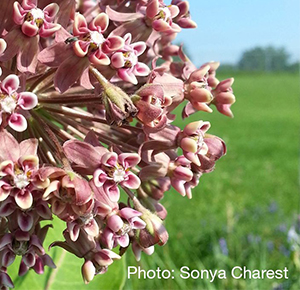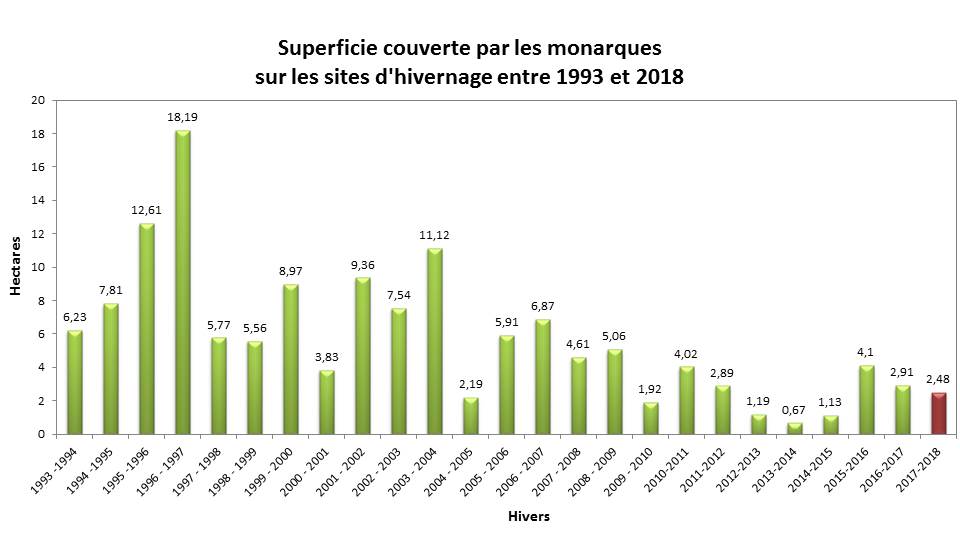
Last evaluation shows Eastern monarch population has dropped by 15% since last year. These worrisome numbers emphasize that more work is needed to understand and protect the migratory monarch, which is at risk of extinction.
By André-Philippe Drapeau Picard
Mission Monarch coordinator
Since a historical peak in 1997, the Eastern migratory monarch population has declined by 80%. This tendency, especially observed on overwintering grounds in Mexico, has alarmed governments and environmental groups across North America. In Canada, the butterfly was designated «special concern species» in 1997, then «endangered species» in 2016. Winter of 2013-2014 was the lowest year in terms of area, monarchs covering only 0,67 hectare. This year, the butterflies occupied 2,48 ha, which is the lowest record in three years.

What’s the matter?
The numbers published today are worrying. Last summer, monarchs were relatively abundant; thus we were expecting this abundance to be reflected in overwintering populations. This leads to believe something happened during migration. Did the late migration many monarchs went on had such an impact? Was it the consequence of extreme meteorological events on the way? It is too early to say.
Generally speaking, monarch decline is attributed to several causes: pesticide use, milkweed reduction, logging, climate change… Since the butterfly travels over great distances, through varied landscapes, it comes across obstacles of different nature. This a real puzzle for scientists and policy makers, who have to put all the pieces together in order to implement an efficient conservation plan.
But one thing is clear, migratory monarch populations are declining, and the faith of the migratory phenomenon is at risk. Researchers recently calculated that Eastern population quasi-extinction risk is near 60% over 20 years, according the worst-case scenario. To avoid this, the target in an overwintering area of 6 ha, which is more than twice what was observed this year.
There’s still work to be done
These numbers show there is still work to be done in order to understand and protect the monarch. To achieve this, we must go on research and habitat protection. Sharpening our understanding of the monarch biology and the factors affecting its survival will make it possible for us to give it adequate protection.
More articles

8 comments